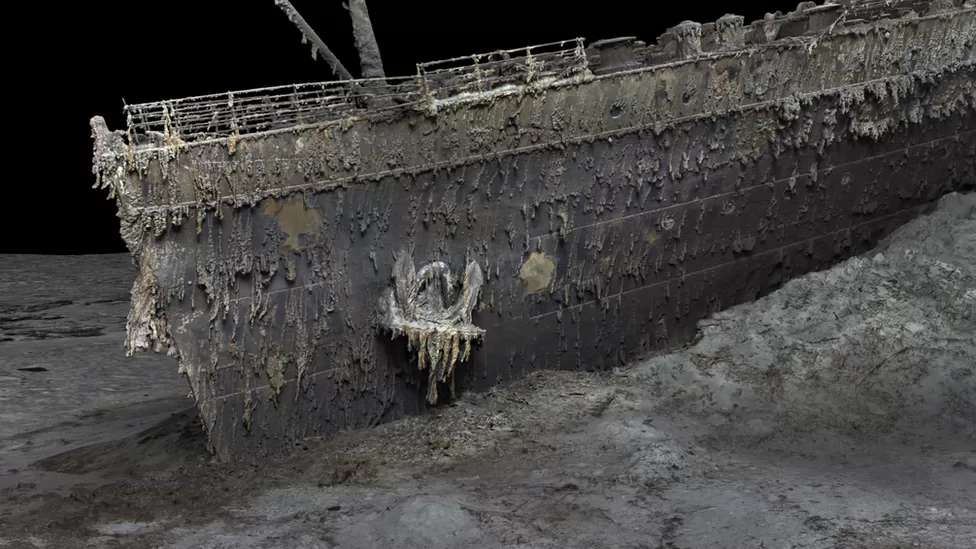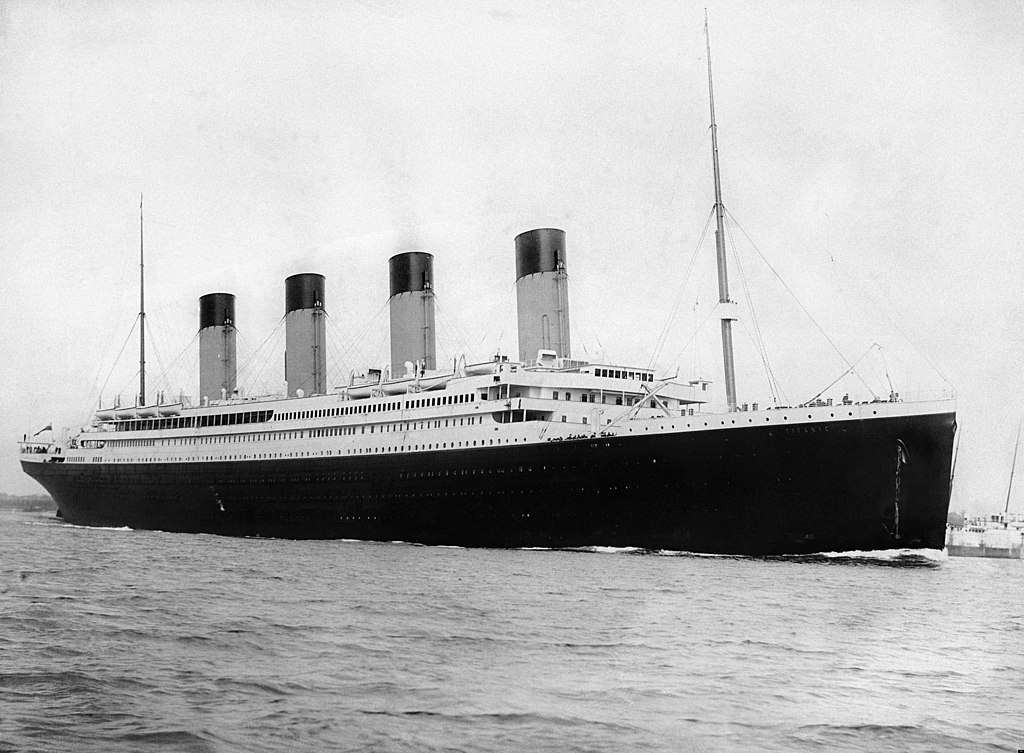A new ground breaking achievement has been accomplished by deep-sea researchers who have conducted the first ever full scale digital scan of the Titanic revealing the entire wreck in unparalleled detail and clarity.

The companies behind an upcoming documentary on the historic shipwreck made this announcement on Thursday 18th May 2023.
A Titanic Task
Utilising two remotely operated submersibles, a dedicated team of researchers spent six weeks during the previous summer in the North Atlantic, meticulously mapping the entirety of the shipwreck and the surrounding debris field spanning over three miles.
This expansive debris field, where personal items belonging to the Titanic’s passengers such as shoes and watches were scattered, has now been comprehensively documented.
 3D scan of the bow of the Titanic showing its anchors. (Atlantic Productions/Magellan)
3D scan of the bow of the Titanic showing its anchors. (Atlantic Productions/Magellan)
Richard Parkinson, the founder and CEO of Magellan, a deep-sea exploration firm, estimates that the resulting data, comprising a staggering 715,000 images, is ten times larger than any previously attempted underwater 3D model.
New Documentary
Anthony Geffen, the head of Atlantic Productions, the documentary maker involved in the project, described the data as an exact digital replica, or a “twin,” of the Titanic, capturing every minute detail.
The Titanic, renowned for its ill-fated maiden voyage from Southampton, England, to New York City, struck an iceberg off the coast of Newfoundland in the North Atlantic on April 15, 1912. Within hours, the luxurious ocean liner tragically sank, claiming the lives of approximately 1,500 people.
Discovered in 1985, the wreck rests at a depth of around 12,500 feet (3,800 metres), roughly 435 miles (700 kilometres) off the Canadian coastline.
Quality Images
Geffen emphasises that other images of the Titanic are often limited by very low light levels. This only allowed viewers to observe one area of the wreck at a time.
However, the newly created 3D model provides a comprehensive view of both the bow and stern sections, which had separated upon sinking, with exceptional clarity.
This detailed rendering even includes the serial number on the propeller.
The researchers have dedicated seven months to processing and rendering the vast amount of data they collected, with a documentary about the project scheduled for release next year.
 The RMS Titanic leaves Southampton on her fateful voyage in April 10, 1912.
The RMS Titanic leaves Southampton on her fateful voyage in April 10, 1912.
Beyond the documentary, Geffen expressed his hope that this cutting-edge technology will aid researchers in uncovering further details about the Titanic’s tragic demise and allow individuals to engage with history in an entirely fresh manner.
“All our assumptions about how it sank, and a lot of the details of the Titanic come from speculation because there is no model that you can reconstruct or work exact distances,” Geffen explained.
“I’m excited because this quality of the scan will allow people in the future to walk through the Titanic themselves… and see where the bridge was and everything else.”
News
Miley Cyrus N-de & S*xy Collection (10 Photos)
Miley Cyrus, the American Fappening celeb, is in a new set of nude and sexy pics, showin’ off her stuff! Instagram: https://www.instagram.com/mileycyrus/
Exactly 6 years ago, Taylor Swift’s “MV that made the audience talk a lot” Delicate was released globally.
After exactly 1 year and 4 months of release, Taylor Swift’s “Look What You Make Me Do” has officially reached 1 billion views on YouTube. On December…
Sylvester Stallone’s model daughter Sistine, 17, looks just like her mother Jennifer Flavin, 46, as they step out in matching denim shorts in Antibes
Sylvester Stallone is currently soaking up the sun in Antibes, France, with his stunning wife and daughters and the family resemblance is clear to see. The Rocky…
Miley Cyrus’ Fans Speculate That She Got ‘Plastic Surgery’ After Seeing Before-And-After Photos From 2012 To 2024
Miley Cyrus has evolved from a Disney darling to a full-fledged rockstar, and many of her fans feel like they’ve grown up with her. Over time, the “Flowers”…
Arnold Schwarzenegger spotted filming Netflix series in Elora
Arnold Schwarzenegger, the illustrious bodybuilder, action star, and former governor, can now add another highlight to his extensive résumé: a visit to Elora. Schwarzenegger was spotted on…
Arnold Schwarzenegger Was Honored As An Outstanding Bodybuilder Who Redefined The Perfect Physique
Arnold Schwarzenegger, the legendary seven-time Mr. Olympia, stands as the epitome of the bodybuilding realm, forever etched in history as the most influential bodybuilder of all time….
End of content
No more pages to load











